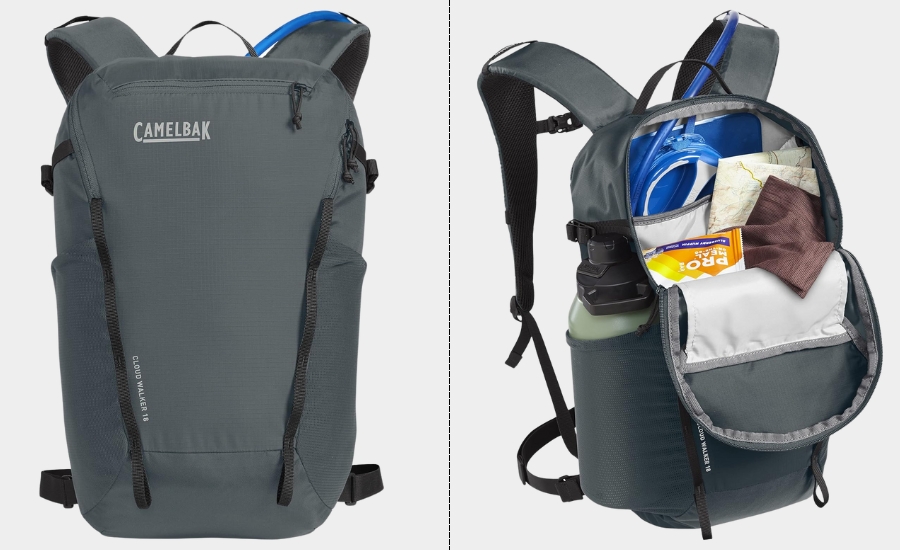Staying hydrated during outdoor activities like hiking, biking, and running is crucial. Choosing between a waistpack hydration pack (hip pack) and a backpack hydration pack can make all the difference in your comfort and efficiency. Each option has its own set of advantages and disadvantages, depending on the type of adventure and the personal preferences of the user. Let’s break down the benefits and drawbacks of each to help you make an informed decision.
Waistpack Hydration Packs (Hip Packs)
Benefits
1. Lightweight and Minimalist Design: Waistband hydration packs are typically lighter, making them ideal for short-duration activities like trail running or quick mountain biking sessions. They provide just enough space for essentials—water, snacks, phone, and small tools—without unnecessary bulk.
2. Freedom of Movement: Positioned around your hips, these packs keep your upper body free, allowing greater mobility. This is especially useful for activities that require upper-body flexibility, such as mountain biking or trail running on rugged terrain.
Example: When navigating tricky turns or descents on a bike, having unrestricted upper-body movement is crucial for maintaining balance.
3. Improved Balance and Stability: With the weight positioned around your hips, you experience less strain on your back and shoulders. This can improve balance and stability on technical trails or uneven surfaces, making hip packs particularly popular for off-road biking or light hikes.
4. Breathability: Since hip packs leave your back exposed, they provide better ventilation compared to backpacks. This is especially advantageous in hot climates or during high-intensity activities, helping to keep you cool.
Example: On a hot summer run, having your back free from a sweat-inducing backpack makes the experience much more pleasant.
5. Quick and Easy Access: Waistband packs offer easy access to gear without the need to remove the pack. External pockets are within arm’s reach, allowing you to grab snacks, tools, or a phone without stopping.
Example: While riding a bike, you can quickly access an energy bar or adjust your gear without having to stop and take off the pack.
Drawbacks
1. Limited Capacity: Hip packs are small by design, typically holding about 1 to 1.5 liters of water. They don’t have much room for extra gear, which limits their use for longer or more gear-intensive outings.
Example: On a multi-hour hike, the limited capacity for water and essentials could force you to either refill often or carry extra items externally.
2. Less Durability in Tough Conditions: Hip packs tend to be less rugged than backpacks, as they are designed for lighter, shorter activities. Over time, exposure to rough environments could cause them to wear out faster than a sturdy backpack.
Example: Frequent use on dusty, rocky trails may cause the material to degrade more quickly than a high-end backpack.
Backpack Hydration Packs

Benefits
1. Larger Capacity: Backpacks can carry more water (usually 2-3 liters) and gear. They offer additional storage compartments for food, extra layers, tools, and other essentials, making them perfect for longer adventures like all-day hikes or extended mountain bike rides.
Example: On a full-day hike, a backpack hydration pack provides ample space to carry enough water, snacks, a first-aid kit, and extra clothing layers.
2. Even Weight Distribution: A well-designed hydration backpack spreads weight evenly across your back and shoulders, making it easier to carry heavier loads for longer periods. This helps reduce fatigue, especially during all-day activities.
3. Durability and Versatility: Hydration backpacks are generally constructed from sturdier materials than hip packs, designed to withstand more rugged terrain and tougher conditions. Many are equipped with multiple compartments, reinforced stitching, and weather-resistant fabrics.
Example: A backpack hydration pack can hold up in rough outdoor conditions, making it a more versatile choice for multi-day hikes or biking trips.

4. More Gear Storage: The additional compartments and storage pockets in a backpack allow you to carry essential gear like cameras, GPS devices, and extra clothing. This versatility makes backpacks ideal for more gear-intensive adventures.
5. Stable and Secure Fit: Many hydration backpacks are designed with adjustable straps and chest harnesses to provide a secure, snug fit. This prevents the pack from bouncing or shifting during intense activities, offering greater stability.
Drawbacks
1. More Bulk and Weight: Even though backpacks can carry more, the extra capacity comes with increased bulk and weight. This can cause discomfort, particularly on shorter outings or during activities that require agility, like trail running or fast-paced biking.
Example: For a quick two-hour bike ride, the bulk of a hydration backpack might feel overkill, limiting your freedom of movement.
2. Reduced Breathability: Backpacks cover a significant portion of your back, which can trap heat and cause sweat buildup, especially during high-intensity activities or in warmer climates. Although many modern packs feature mesh panels to improve airflow, they can still feel hot compared to a waistband pack.
Example: On a hot day, the sweaty feeling of a backpack sticking to your back can become quite uncomfortable, especially if you’re covering a lot of ground quickly.
3. Less Convenient Access: With backpacks, accessing items usually requires stopping and removing the pack. While they offer more storage space, the convenience of quickly grabbing an item is often reduced.
Example: During a bike ride or hike, you may need to stop, remove your backpack, and rummage through compartments to find what you need.
Verdict: Which is Better?
Choosing between a waistpack hydration pack and a backpack hydration pack comes down to the type of outdoor adventure you’re planning and personal preferences.
- Waistpack hydration packs are ideal for shorter, high-mobility activities like trail running, quick hikes, or mountain biking. Their lightweight design, breathability, and ease of access make them perfect for adventures where you don’t need to carry much gear and want to move freely.
- Backpack hydration packs are better suited for longer, gear-heavy adventures, such as full-day hikes, multi-hour bike rides, or multi-day excursions. Their larger capacity, durability, and even weight distribution make them the go-to option when you need to carry more water and gear for extended periods.
In summary, waistpack hydration packs excel in short, intense activities, while backpack hydration packs are more versatile and durable for longer, demanding adventures. Consider the specifics of your trip to decide which option is best for you.





